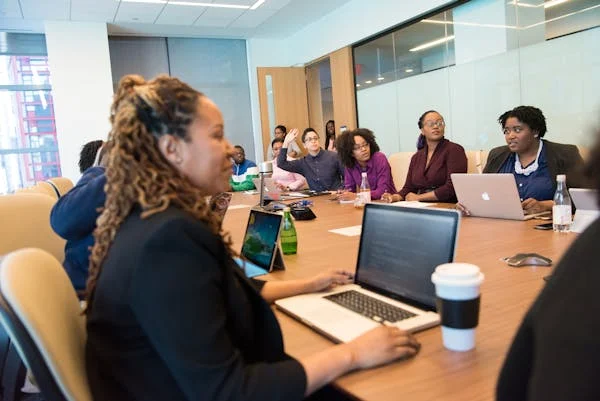In a world where businesses are transforming at lightning speed, digital change isn’t just something “nice to have.” It’s something that can make or break your business. Yet, the truth is most teams struggle to adapt when things go digital. In this article, we’ll take a deep dive into the key statistics that show how well—or how poorly—teams are adjusting. For each stat, we’ll break down why it matters, what it means, and how your team can learn from it.
1. 70% of digital transformation efforts fail due to lack of user adoption
Why it happens
When companies invest in new technology, they often forget the most important part—people. It’s easy to assume that just because a tool is better or faster, people will start using it right away. But that’s rarely the case. If users don’t understand how it helps them, or if they weren’t involved in the process, they won’t be excited—or even willing—to change.
What this means for your team
It’s not enough to roll out new tools. You need to get your team on board. In fact, change should start with them. Ask what they need. Involve them in demos. Let them test the tools and share feedback. When users feel ownership, adoption becomes natural.
What to do instead
- Start with why. Clearly explain why the change is happening and what problems it solves for the team.
- Appoint internal champions—people who others trust and look up to—to encourage the use of new tools.
- Train early, and train often. Don’t assume one session is enough.
- Make feedback easy. Let your team tell you what’s working and what’s not.
Digital change needs more than new tech. It needs a human-centered plan.
2. Only 30% of digital change initiatives meet or exceed their intended outcomes
What’s behind the low success rate
A lot of digital change efforts start with excitement but lack a clear end goal. Teams jump in without knowing what “success” actually looks like. Without proper measurement and direction, it’s easy to get lost.
How to avoid this trap
Before launching any digital project, ask one simple question: What does success look like in 6 months? Define specific results. Maybe it’s reducing manual work by 50%. Or getting 80% of your team to use the new CRM daily. When you define outcomes, you give everyone a target to aim for.
Steps to hit your mark
- Set measurable KPIs before launch.
- Assign owners to track these metrics weekly.
- Review and tweak the plan monthly.
- Don’t be afraid to pivot if something isn’t working.
Success isn’t random. It’s built through careful planning, measurement, and course correction.
3. 38% of employees feel their organization handles digital change effectively
Why confidence matters
When less than 4 in 10 employees feel confident in how change is handled, something’s off. Confidence builds momentum. If your team believes leadership can lead through change, they’ll be more likely to follow.
Building team trust during change
Trust is built through transparency, not perfection. Don’t wait until everything is figured out to communicate. Be open about challenges. Let your team see the process. It’s better to say “we’re working on it” than to stay silent.
How to improve this number
- Share progress updates regularly.
- Let people know how their role fits into the bigger picture.
- Celebrate small wins to build momentum.
- Offer support where people feel stuck—especially during rollout.
Confidence grows when employees feel seen, heard, and supported.
4. 63% of managers report digital transformation is harder than expected
Why leaders struggle
On paper, change feels exciting. But when it comes time to actually change day-to-day habits, it gets tough. Managers are often stuck in the middle—balancing leadership expectations and team resistance. They’re also usually not given enough support.
Making it easier for your managers
If you want your transformation to work, empower your managers. Train them not just on the tech, but also on how to lead change. Help them answer tough questions. Give them time to adjust before expecting them to lead others.
Actionable ways to support managers
- Offer dedicated change leadership coaching.
- Provide scripts or talking points to help them communicate change.
- Build a peer support group for managers to share experiences.
- Reduce their workload temporarily during major rollouts.
Your change effort is only as strong as your frontline leaders. Make them your first investment.
5. 45% of change initiatives are reported as “successful” by leadership
The leadership lens
When less than half of leaders call change efforts a success, that says a lot. But it also reveals something else—there’s a disconnect between what leadership sees and what actually happens on the ground.
Bridging the gap
Success can’t just be measured by finishing the project. Real success is when teams adopt and use the change in a meaningful way. Leaders need visibility into both.
How to align leadership with reality
- Track both technical rollouts and human adoption rates.
- Use surveys and anonymous feedback to understand team sentiment.
- Create dashboards that show adoption metrics alongside business metrics.
The best leaders aren’t just focused on delivery—they’re focused on impact.
6. Companies with effective change management are 6x more likely to meet objectives
What makes change management “effective”
It’s not about fancy slides or checklists. Effective change management means planning for how people will react, supporting them through the transition, and keeping them aligned. When this is done well, your goals stop being guesses—they become realistic targets.
How to get there
Look at change as a journey, not a task. This mindset allows you to prepare for speed bumps, reroute when needed, and bring your whole team along.
Build a strong foundation
- Involve every department early, even if the change seems “tech-related”
- Set up a cross-functional change team—include people from HR, IT, ops, and frontline staff
- Map out what each group needs to adopt the change
- Build timelines that include adoption time, not just implementation time
Measure what really matters
Most companies focus on project milestones—like launching a tool or migrating data. That’s important, but adoption is what moves the needle.
- Track daily or weekly usage of new tools
- Survey employees at multiple stages—before, during, and after the change
- Identify and address adoption plateaus
Successful change isn’t about finishing a checklist—it’s about bringing people with you and hitting the goals that truly matter.
7. Only 16% of employees feel fully supported during digital change
Why support is everything
Imagine being told to use a new system without help. Most people feel anxious or frustrated. That emotion directly impacts how well they adopt the change—or if they adopt it at all. Support isn’t just a safety net; it’s the bridge to success.
What support really means
It’s not just technical help or FAQ documents. Real support includes emotional reassurance, active listening, accessible leaders, and patient trainers.
Actionable ways to provide support
- Offer live, face-to-face training—preferably in small groups
- Use “office hours” where employees can drop in with questions
- Build a support squad: friendly coworkers trained to help others
- Use short video demos for common tasks—easy to watch, replay, and share
Also, communicate clearly what support exists. Often, people don’t know who to ask or where to go, so they don’t ask at all.
You don’t need an expensive support system—you need a human one.
8. 50% of organizational resistance stems from middle management
The hidden obstacle
Middle managers can make or break your change effort. They have direct access to teams, hold key relationships, and manage workloads. But if they feel unsure, left out, or overwhelmed, they may unconsciously—or actively—block the change.
Why this group resists
Often, middle managers weren’t involved in the decision to change. They may fear losing control, being replaced, or failing in front of their team. They may even disagree with the direction but feel unable to speak up.

How to turn resistance into alignment
- Involve managers in the planning phase—not just execution
- Hold listening sessions before rollout and act on what you hear
- Equip them with talking points and leadership training
- Reward early adopters and showcase positive examples
The best change agents are the ones your team already trusts. If you win over your managers, you’ve already won half the battle.
9. 80% of successful transformations have visible and active executive sponsorship
Why leadership visibility matters
It’s one thing for executives to approve a budget. It’s another for them to show up at team meetings, answer tough questions, and explain why the change matters. When leaders are actively involved, people take the change seriously.
The power of presence
When the C-suite gets in the trenches—even briefly—it builds belief. It shows that this isn’t just another project. It’s something the company is truly invested in.
What executive sponsors should do
- Attend key kickoff events and team meetings
- Communicate personally—video messages work great
- Respond to concerns directly, not just through managers
- Share progress updates with clarity and energy
Executive sponsorship isn’t just about visibility—it’s about vulnerability too. When leaders admit what they don’t know and ask for feedback, they build real trust.
10. 33% of failed transformations cite lack of communication as a major issue
The silent killer
When people don’t know what’s going on, they fill in the blanks themselves. That leads to rumors, fear, and disengagement. And suddenly, your well-planned transformation starts to wobble.
What clear communication looks like
It’s regular. It’s two-way. And it speaks to real concerns. It’s not corporate jargon or generic updates—it’s meaningful, specific, and human.
How to improve communication during change
- Use multiple channels: email, chat, town halls, even printed posters
- Break messages into digestible updates—don’t flood inboxes with long memos
- Repeat key messages multiple times and in different ways
- Ask for feedback and act on it, visibly
Also, make space for listening. Set up a way for employees to share what they’re worried about anonymously. Then respond publicly and thoughtfully.
Clear communication isn’t just about talking. It’s about making people feel heard and understood.
11. 66% of successful teams use structured change management frameworks
Why structure matters more than speed
Most organizations jump into change with good intentions—but little structure. They rush, skip steps, and hope people will figure things out. But real change doesn’t work that way. The teams that succeed usually follow a clear, proven framework.
What is a change management framework?
A framework is simply a repeatable process for managing how people adopt change. It doesn’t have to be complicated. It just needs to guide the journey—from planning to execution to long-term adoption.
Examples that work
- ADKAR: Awareness, Desire, Knowledge, Ability, Reinforcement
- Kotter’s 8 Steps: From creating urgency to anchoring change in culture
- McKinsey’s 7-S Model: Focuses on shared values and alignment
Pick one and customize it to your team’s culture. You don’t need to follow every rule—but following none often leads to failure.
How to apply a framework step-by-step
- Start with awareness. Why is the change happening?
- Create desire. How does it help each person’s work?
- Build knowledge. What training do people need?
- Enable ability. How will they use the tools in real tasks?
- Reinforce. How do you celebrate wins and keep momentum?
Frameworks help teams move together. They turn chaos into clarity.
12. 73% of employees experiencing high change fatigue resist digital initiatives
What is change fatigue?
It’s when your team has faced so many changes—back to back—that they’re simply tired. Even good changes feel like just “one more thing” they have to deal with. That mental burnout leads to pushback.
Why it happens
Change fatigue builds up quietly. It might be constant updates, new tools, shifting goals, or just too much uncertainty. Over time, people stop caring. They stop listening. And they definitely stop adopting.
How to fight back
- Limit overlapping change initiatives
- Create breathing space between rollouts
- Be honest: “We know this is a lot, and here’s how we’ll help”
- Give people more control—let them choose when to train, or what to learn first
Simple ways to ease the load
- Offer mental wellness support
- Recognize effort, not just outcomes
- Pause unnecessary changes if possible
- Provide clear roadmaps so people can see what’s ahead
People don’t resist change because they’re lazy. They resist it because they’re tired. The good news? With empathy and pacing, you can reignite their energy.
13. 48% of organizations lack a dedicated change management team
Why this creates problems
Without a team focused on managing the people side of change, things fall through the cracks. IT owns the tech. Ops owns the process. HR owns training. But who owns the experience of the people going through change?
When no one is in charge, no one takes responsibility.
What a change team actually does
- Coordinates communication across departments
- Tracks adoption and feedback
- Supports managers and teams with training
- Troubleshoots human problems, not just system issues
This isn’t about adding a big cost. It’s about adding focus.
How to create a small but mighty change team
- Assign a cross-functional group (even 2–3 people) to own change initiatives
- Give them time—not just tasks—to focus on change
- Let them lead planning sessions and post-launch reviews
- Rotate team members over time to build broad support
Even the smallest team can make a big impact if they’re focused on making change smoother for everyone.
14. 60% of teams report inadequate training during tech transitions
Training: the most overlooked part of change
Companies often spend months choosing tools and planning rollouts—but only days on training. That’s like buying a race car and skipping driving lessons. Without proper training, people get stuck, frustrated, and avoid the new system altogether.
What real training looks like
It’s clear. It’s specific. And it’s ongoing.
One-time webinars or dense manuals don’t cut it. People need hands-on help, examples tied to their work, and space to practice without fear of making mistakes.
Building a smart training plan
- Break learning into small steps: start with must-know basics
- Use job-specific examples and tasks
- Offer self-paced modules, but include live sessions for Q&A
- Encourage “learn together” sessions where teams experiment and help each other

After launch matters more
Training doesn’t stop after go-live. That’s often when questions and confusion actually begin.
- Host follow-up clinics
- Keep resources available and easy to find
- Track usage and offer refresher lessons
Training is the bridge between intention and action. Invest in it like you mean it.
15. Organizations with strong change management are 3.5x more likely to outperform peers
Change is no longer optional—it’s a competitive advantage
In a fast-moving world, companies that adapt faster win. Whether it’s a new tool, a new customer demand, or a global crisis—how well your team can adjust directly impacts your bottom line.
And strong change management is the key that unlocks that ability.
What “strong” really means
- Having a plan
- Communicating clearly
- Supporting people, not just systems
- Measuring adoption, not just deployment
These aren’t fluffy practices—they drive performance.
How to build lasting change capability
- Make change part of the culture: talk about it, expect it, support it
- Develop change skills as part of leadership training
- Reward adaptability, not just results
- Reflect on every major change: what worked, what didn’t, and how to improve
Being great at change isn’t about surviving one project. It’s about becoming a team that’s always ready for what’s next.
16. 90% of change leaders believe cultural barriers impede success
The invisible wall
Culture is often the silent force that either drives or blocks change. It’s the unspoken rules, beliefs, and habits people follow. And when culture doesn’t align with change, no amount of planning will fix it. You can change tools, processes, or even strategy—but if the mindset stays the same, progress slows.
What cultural resistance looks like
You’ll hear phrases like:
- “This is how we’ve always done it.”
- “That won’t work here.”
- “Why are we doing this again?”
These aren’t just words—they’re signals that your change is rubbing against deeply rooted values or fears.
Tackling culture, one step at a time
- Start by naming it. Share real examples where culture clashed with change.
- Involve team members to co-create new norms. Ask: What do we need to believe to make this work?
- Tell stories of people who adapted successfully. Culture spreads through example.
Shift the story, not just the process
If your culture values control, introduce structure in the change. If it values innovation, show how this change frees people to be creative.
The goal isn’t to erase your culture—it’s to evolve it in a way that supports your future.
17. 35% of digital initiatives face delays due to poor stakeholder alignment
Why alignment is everything
When teams don’t agree on the “why” and “how” of a project, delays are almost guaranteed. Some stakeholders move fast, others drag their feet. Conflicts arise. Priorities clash. And the project hits a wall.
Where misalignment starts
It usually begins with assumptions. One team thinks the project is about speed. Another thinks it’s about cost savings. A third sees it as a chance to experiment. Without a shared vision, you end up with confusion.
How to align early and stay aligned
- Start with a kickoff that includes all key stakeholders
- Use one simple document that outlines goals, timelines, responsibilities, and risks
- Assign a “project voice”—someone who owns communication across all teams
Keep alignment visible
- Share weekly updates that show progress against shared goals
- Surface roadblocks openly and invite collaboration to solve them
- Revisit agreements if project scope shifts—don’t assume people are still aligned
Alignment isn’t just about agreement. It’s about shared commitment—and that only comes through open, ongoing conversation.
18. 40% of companies use change champions to drive adoption
The power of peer influence
Change champions are employees—not managers—who help others adopt new ways of working. They aren’t just cheerleaders. They’re early adopters, helpers, and trusted voices. People listen to them because they’re relatable, not because they have a title.
Why champions work
- They speak the team’s language
- They’re approachable and available
- They can spot problems early and raise flags
When change champions are in place, the organization moves together instead of pulling apart.
How to build a great champion network
- Choose champions based on trust and influence, not job title
- Give them early access to new tools and training
- Involve them in planning—let them help shape the rollout
- Celebrate their contributions publicly
Also, listen to them closely. They’ll know where people are struggling before any dashboard will tell you.

Champions don’t just help adoption—they build momentum.
19. 28% of organizations track ROI from digital change efforts
Why tracking matters
Digital change is often treated as a sunk cost. Companies invest, hope for the best, and move on. But without tracking the return on that investment—whether in time saved, errors reduced, or revenue earned—it’s impossible to learn what worked or to justify future change.
What stops teams from tracking ROI
- It’s hard to measure soft outcomes like satisfaction or ease of use
- Data may be scattered across systems
- ROI may take time to show up
But just because it’s hard doesn’t mean it’s not important.
What you can start measuring now
- Time spent on tasks before and after the change
- Error rates, customer satisfaction, or employee engagement
- Adoption rates—who is using the new system, and how often
Simple ways to capture ROI
- Use quick surveys pre- and post-rollout
- Assign one team member to own ROI tracking from day one
- Set 30-, 60-, and 90-day review points to compare progress
When you track ROI, you don’t just prove value—you find ways to create more of it.
20. 55% of teams fail to reach full user adoption within the first year
Adoption isn’t automatic
Just because you launched the tool doesn’t mean people are using it. They may revert to old systems, use workarounds, or skip it altogether. Full adoption takes time—and active effort.
Why adoption stalls
- People don’t see the benefit
- Training was rushed or unclear
- Early bugs created mistrust
- No one is checking if the tool is really being used
What to do after go-live
- Check usage data weekly. Who’s logging in? What features are used?
- Follow up with non-users. Ask what’s holding them back.
- Offer refresher training and incentives for regular users.
Build habits, not just knowledge
Adoption is about making the new system part of daily work. That means:
- Embedding it into workflows
- Asking for feedback and acting on it
- Recognizing teams that lead the way
Your launch is the beginning, not the finish line. The real work starts when the system goes live—and it’s the work that determines success.
21. 64% of employees say leadership engagement affects their buy-in
Leadership isn’t just strategy—it’s influence
People watch what leaders say, but more importantly, what they do. When leaders talk about change but don’t participate in it, employees lose motivation. But when leadership is visible, present, and consistent, buy-in skyrockets.
Why your team needs to see leadership involved
Change can feel risky. Employees look to leadership to understand if the risk is worth taking. If leaders are excited and committed, it gives others the confidence to try. If leaders are distant or detached, people hesitate.

What leadership engagement really looks like
- Attending training sessions alongside staff
- Using the new tools themselves—and sharing their experience
- Giving honest updates about challenges and wins
- Making time to answer questions or concerns in person
How to make leadership engagement consistent
- Assign each executive to sponsor a specific team or phase of change
- Set up monthly Q&A sessions where staff can ask direct questions
- Let leaders share short videos or stories showing how they’re using the new systems
Change isn’t top-down—it’s side-by-side. When leadership walks the talk, the whole organization walks with them.
22. Only 21% of organizations rate their digital maturity as “high”
Why digital maturity matters more than digital tools
You can have the best tools in the world, but if your people, processes, and mindset aren’t ready for change, they won’t work. Digital maturity means your organization is ready—not just to adopt tools—but to evolve with them.
What low digital maturity looks like
- New tools are added, but old habits stay the same
- Leaders resist new ways of working
- Projects lack clear ownership or follow-through
- Data is siloed, and decisions are based on gut, not facts
How to grow your digital maturity
- Focus on small, measurable improvements—don’t try to overhaul everything at once
- Build digital skills into onboarding and training
- Encourage experimentation and reward teams that try new approaches
- Break down silos—create shared dashboards, common goals, and cross-functional check-ins
Invest in adaptability, not just tools
Digital maturity isn’t about having the most apps. It’s about creating a team that can learn, adapt, and thrive in a constantly changing world.
23. 43% of teams abandon digital tools due to poor onboarding
The first impression makes or breaks adoption
When teams don’t understand how to use a tool—or why they should—they give up fast. Poor onboarding leads to frustration. And frustration leads to abandonment.
What poor onboarding looks like
- One long training session with too much information
- Lack of hands-on practice
- No follow-up or support after launch
- Confusing materials that don’t connect with real tasks
How to make onboarding easy and effective
- Use short, task-based tutorials that show how to use features in context
- Let people try the tool with low-risk practice sessions
- Offer quick wins—easy tasks that build early confidence
- Set up peer-led demos where employees train each other
Keep support ongoing
After onboarding, adoption can still fall if questions go unanswered. Provide:
- A searchable help center with bite-sized videos
- A Slack or chat channel for real-time support
- A feedback form to capture frustrations and improve the experience
Onboarding isn’t just the start of adoption—it’s the foundation of it.
24. 58% of projects with formal change management meet time and budget targets
Planning people and process saves time and money
When projects go over budget or miss deadlines, it’s rarely the technology’s fault. Most delays happen because people aren’t ready. Change management ensures the human side is planned with the same care as the technical side.
Why most projects fall behind
- Teams don’t adopt new tools quickly enough
- Resistance slows rollout
- Training takes longer than expected
- Miscommunication leads to rework
How change management keeps projects on track
- It ensures that everyone knows what’s happening, when, and why
- It prepares people before the change hits
- It prevents resistance by involving employees early
- It provides support during the rollout, so adoption moves faster
Make change part of the project plan
Don’t treat change management as “extra.” Include it in your timeline, budget, and resources from day one. Assign ownership. Set deadlines. And review it like any other critical component.
Smooth adoption isn’t just nice—it’s essential for staying on time and on budget.
25. 47% of users resist change due to fear of job loss
Fear is the most powerful blocker
When people hear “digital transformation,” many think “automation.” And when they think automation, they worry: Will I be replaced? That fear causes resistance—even if the tool is meant to help, not harm.
You can’t ignore this fear—you have to address it
It doesn’t matter if the fear is logical or not. If it exists, it’s real to your team. And it impacts adoption. Pretending the fear isn’t there only makes it worse.
How to respond with empathy and clarity
- Talk openly about how the tool will change roles—and what won’t change
- Share how automation will reduce busywork, not replace people
- Highlight new opportunities for growth, training, or leadership
Show proof, not just promises
If similar roles in your company changed without layoffs, share those stories. Let employees hear from peers who went through the transition and came out better for it.
Also, involve HR early. Create clear pathways for upskilling and career development. When people feel secure, they’re far more willing to embrace change.
26. 36% of companies integrate change management at project initiation
Timing makes all the difference
One of the biggest reasons change management fails is because it’s an afterthought. Many companies focus on tools and timelines, then call in change support once resistance begins. But by then, it’s often too late.
Why early integration matters
When you bake change management into the project from day one, it becomes part of the DNA. You plan communication alongside testing. You prepare training alongside implementation. And most importantly, you build in trust from the start.

What it looks like in practice
- The change team joins the project team from kickoff—not midway
- Stakeholder maps and communication plans are developed at the same time as technical specs
- Risk assessments include cultural and behavioral risks, not just technical ones
How to make this shift
- Add a change management workstream to every major project
- Assign a change lead with a clear voice in planning meetings
- Build change milestones into the overall project timeline
Early doesn’t just mean ahead of schedule—it means ahead of resistance. That’s where successful adoption starts.
27. 75% of agile digital transformations fail to scale across the enterprise
Agility without adoption is just chaos
Agile is a powerful approach to transformation—when done right. But moving fast in small teams doesn’t always lead to long-term success across a large company. Many agile projects show promise early, only to fizzle out when it’s time to scale.
Why scaling fails
- Early teams are handpicked, motivated, and well-resourced—others aren’t
- Leadership doesn’t adapt to support new ways of working
- Processes stay stuck in old models, even as tools evolve
- Wins aren’t shared, so momentum stalls
How to scale with sustainability
- Standardize what works from early pilots and document it
- Involve enterprise leaders early in small wins
- Create a playbook others can follow, with examples and templates
- Set up internal coaching or mentoring across teams
Focus on mindset, not just methods
True agile transformation isn’t about doing sprints—it’s about thinking differently. If your teams think the same but move faster, nothing truly changes. But if they shift how they solve problems, prioritize work, and learn from failure, your transformation has staying power.
28. 62% of organizations lack post-implementation support strategies
After the launch comes… silence?
Many companies celebrate go-live as the finish line. But real adoption starts afterward. Without a clear support system in place, excitement fades, problems go unsolved, and old habits return. Suddenly, that shiny new system is being ignored.
What support should look like
- A clear point of contact for ongoing questions
- A knowledge base with short, searchable guides and tutorials
- Regular check-ins to address challenges and collect feedback
Extend the runway
- Schedule 30-, 60-, and 90-day check-ins with teams
- Offer refresher training at key intervals
- Identify “power users” and let them mentor others
Keep listening, even after launch
People don’t just need support—they need to feel like their experience matters. Capture insights. Track usage. Keep the conversation going.
Without post-launch support, adoption flattens. With it, momentum builds.
29. Teams with early stakeholder engagement are 1.8x more likely to succeed
The earlier, the better
Stakeholders aren’t just approvers—they’re owners, influencers, and sometimes blockers. Engaging them early means fewer surprises, better ideas, and smoother rollouts.
Who your stakeholders really are
- Executives who own strategy
- Managers who influence teams
- End users who feel the impact
- Customers, if the change affects them directly
How to engage stakeholders meaningfully
- Ask for input, not just approval
- Run discovery sessions to learn their pain points and priorities
- Invite them to planning sessions—not just presentations
- Set up a cadence for updates and feedback
Don’t just involve—empower
When stakeholders feel heard and see their input shaping the outcome, they become champions. That’s where real alignment begins.
Engaging early isn’t just respectful—it’s strategic.
30. 71% of change initiatives with regular feedback loops report better adaptation rates
Feedback is your best compass
No plan survives contact with reality. Things will go off-track, questions will arise, and surprises will pop up. Regular feedback isn’t just helpful—it’s essential to keep your change moving forward.
What a strong feedback loop looks like
- You ask for input early, often, and in multiple ways
- You act on what you hear
- You communicate what changes were made because of the feedback.

Simple ways to build your loop
- Short pulse surveys at key milestones
- Weekly check-ins with frontline teams
- An open inbox or anonymous channel for real-time feedback
Most important: close the loop
If someone shares feedback but never hears back, they stop trying. When you acknowledge feedback—even if you can’t act on it—you build trust. And when you do act on it, you build momentum.
Feedback isn’t a one-time survey. It’s a two-way relationship that drives better decisions, stronger buy-in, and lasting change.
Conclusion:
Digital change isn’t easy—but it’s possible. And when done right, it’s transformational. Each of these 30 statistics tells a story. A story of what works, what doesn’t, and what your team can do to not just survive change—but to lead through it.





















